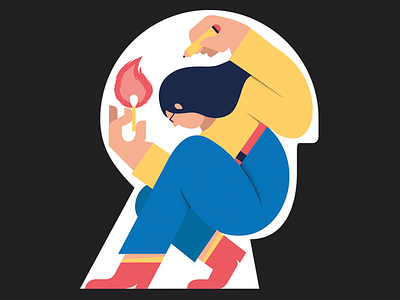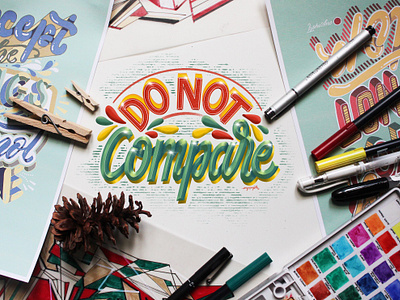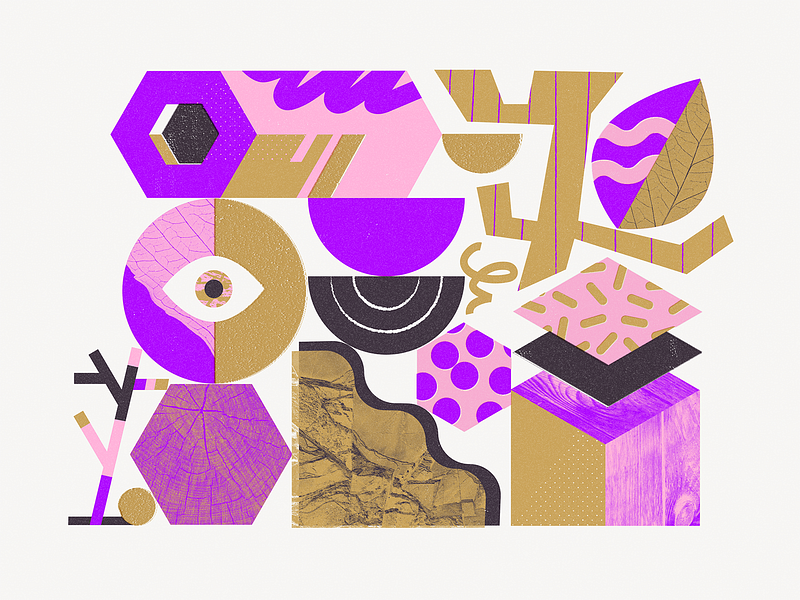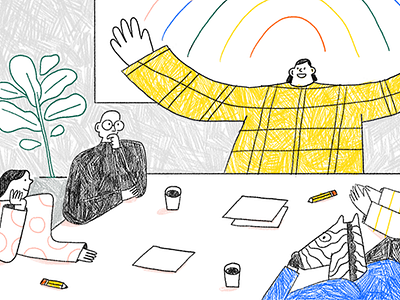In this guest post by Eugene Burndam, learn what it takes to build your creative confidence, develop your strengths, and boost your overall creativity in 2021.
When it comes to being a creator, we often entertain the notion that ideas are finite. Many times what we discern as rare lightbulbs of curiosity are actually plentiful when we know how to adapt our thinking.
When we consider the creative process less like a lightbulb, and more like a well to draw water from, the analogy fits our lifestyle, habits, confidence, and energy levels. When we’re buzzing with creative beans, it usually indicates that the well is full in terms of good ideation routines, resting well, learning, and adapting to focused work. But when the well is empty, the opposite is true. We spiral into unsuccessful loops of behavior that curtail our progress. We approach new projects with blank minds which corrode our confidence.
The best thing we can do is keep replenishing the well of our design lives to enhance momentum. In this article, I’ll share four incredibly useful tips to help build your creative confidence and keep your creativity levels high. Some of these tips you may already know, and others you may not have considered. Either way, I hope these techniques keep your creativity afloat.
Tip #1: Ask how you can contribute
When it comes to creating the best working environment, we tend to prioritize rapport, collaboration, and acknowledgment. But we often wait to be told or asked how we can help to initiate that relationship.
If we’re able to identify the problems of our clients and managers without being asked, we create an opportunity to develop our confidence by putting our best foot forward. There’s a skill in asking that comes with not being pushy and accepting the litany of rejections to our concepts. But those who know how their strengths align with particular sectors and types of people gain the most fulfillment from their work.
We’ve all enjoyed the afterglow of being wanted. Asking to contribute to someone else’s goal is the flip-side of that engagement. Asking someone is the first step where our confidence opens us to possibility. This is because we tend to associate opportunity with a door that must be unlocked by someone else, which fulfills our status quo bias of how things are done. But the second step to fulfillment and contribution is knowing one’s self, the strengths we possess, and the areas that require our design expertise.
This redefines the work relationship because our voice is established in reason, clarity, and knowledge. When we know who we are, how we can help, and most importantly ask how we can help, we can contribute in a way that’s fulfilling and makes the recipient of our work excel too.
Tip #2: Identify and focus on your strengths
The inverse of knowing our strengths comes with the divergent mind of the creative and excitement at participating in so many things. Shiny objects and boredom can betray our expertise and render a perspective from our peers and clients that we are overstretched with curiosity and don’t complete enough tasks.
The second idea that corrodes focused work on our strengths is the pervasive desire to be like our friends and neighbors, and design the same way as them. When we feel threatened by the quality of someone else’s work, we must remind ourselves that their goals don’t align with ours—and neither do their choices.
At worst we choose the path of complete imitation which is actually riddled with the desire for approval and attention-seeking. When we identify this, our humility deepens at the acknowledgment of fresh ideas and the experimentation and research involved to make them.
When we diagnose what focused work isn’t, clarity stabilizes us with the confidence to choose our strengths and field of design without feeling the need to conform to trends or irrational status-seeking. Nature takes its course and we attain the respect of our peers and clients in a genuine way.
RELATED: How to Outsmart Imposter Syndrome & Create With Confidence
Tip #3: Experiment more with your projects
This couldn’t be expressed any better than my recent experience as a student at Shillington College. With deadlines looming for every project, finding the quickest solution to ship the work seemed obvious. But there came a time where my work was under review, and as decent as I thought it was, under the experienced eye of my teacher, Johnny, was a different perspective.
He said to me “Eugene, your work is good and you’re on the right track. But don’t ever feel that you’re completely done with a design, especially when there’s still time.” He added, “Experiment more—produce more outcomes to produce even better-finished ideas”.
When we approach a project, the best thing we can do is to create multiple iterations within the parameters of finite elements. Being in this state of play and having the confidence to keep digging uncovers riches that surprise our culture with mind-blowing concepts. Our sketchbooks and Adobe files should be riddled with rough ideas that exemplify the finished and embellished project. This also provides us the opportunity to tell the story of our design journeys much better and enlightens our erroneous thought that the client, and our culture, will immediately ‘get’ the concept at first glance.
When we’re designing, the S.C.A.M.P.E.R technique can be our greatest ally. But more importantly, the humility of knowing that extensive ideation and critical feedback lay the foundations for great results makes us develop product outcomes that we never thought possible.
Tip #4: Practice pitching your projects
We all acknowledge that design, especially graphic design, runs parallel with marketing. The two are magnetized as forces to develop advertising. With marketing comes the tedious analogy of a Victorian salesman with his funnel projector and the thought of drawing a crowd to speak. But the sale is very important, and if our products are good why shouldn’t we champion them?
Learning to project the stories of our brilliant work is not a means to seek superficial approval, it simply validates the process of our design and the passion we exude concurs with our audience. The trick is to practice being ourselves and not employing gimmicks to win people over. Gimmicks may work once but they won’t work a second time.
The other truth about pitching is that we all get better with practice and become more succinct over time. But there’s a distinct difference between wanting others to like what you’re saying versus explaining why you’re so passionate about this particular project. These scenarios create two completely different mindsets and outcomes. When we employ passion, the focus is put on what we’re saying as opposed to how we say it and empowers us through understanding what resonates with audiences. The pressure dissipates over time because we focus on serving the community instead of how we appear.
Takeaways
Building creative confidence takes time and proactive effort. Keep these tips in mind the next time you find yourself lacking inspiration or doubting your abilities:
- Ask how you can help: Be proactive in your approach. Instead of waiting to be asked, a great way to build confidence is to simply ask how you can use your skills to help contribute to a greater goal.
- Identify & focus on your strengths: Stop comparing your abilities to other creatives and understand how your unique talents and goals differentiate you and your work from the rest.
- Don’t be afraid to experiment: Give your mind space to wander and experiment with multiple solutions to one creative problem. You might just be surprised at what you uncover.
- Practice pitching your designs: The more you practice explaining the thought process behind your work, the more confidence and passion you’ll develop in your creations.
About Eugene: Hi! I’m a blogger and designer based in London, England. I enjoy topics on marketing, learning, and branding. I also relish in building community amongst graphic designers and understanding how we can all think, design, educate, and play better with the great tools at our disposal. Feel free to follow or connect with me on LinkedIn.
Find more Inspiration stories on our blog Courtside. Have a suggestion? Contact stories@dribbble.com.













